EuropeOn, the EU association of electrical contractors, welcomes the upcoming revision of the Energy Performance of Buildings Directive. Buildings will be at the center of climate action and digitalisation in the coming years, as they are needed to support local deployment of renewables, to provide flexibility to power systems and enable the smart electrification of transport. Electrical contractors represent a key segment in the decarbonisation of buildings as they install, integrate and maintain the electrical systems and installations within buildings.
Since the revision of the EPBD in 2018, a renewed impetus for climate action, with the Green Deal and its key actions, and for digitalisation, as many EU citizens have turned to teleworking for the past year, has arisen to warrant a comprehensive revision this EPBD. While it is paramount to decarbonise buildings swiftly, this is also the opportunity to make our buildings smart.
Not only will smart buildings be more energy efficient and able to integrate their own renewable power, they will be able to act as a positive resource for the entire energy system. Grid operators will be able to count on a new source of flexibility, EV and heat pump users will be able to take advantage of the lowest power prices, and consumers can enjoy their own green energy while being remunerated for their grid services.
However, European buildings are old, designed for outdated energy consumption models, and the vast majority of the built environment is not smart in any way. Realising this potential entails a massive acceleration of renovation rates coupled with emphasis on electrification and connectivity.
-The main electrical systems within many older buildings will need to be replaced or modernised to support system integration and smart buildings. Designed at a time when electrified end-uses were rare, in-building wiring, cabling or fuse boxes need an upgrade to keep up with modern lifestyles and new climate measures while ensuring electrical safety. These necessary renovations will underpin the effectiveness of building electrification measures.
-Funding and incentives must be made available to support consumers and building codes must ensure that renovated houses are ready to become a hub for system integration through electrification.
- The new EPBD must support the decarbonisation of transport to a much greater extent. E-mobility has taken off since the 2018 revision and the recharging provisions under art. 8 are already becoming obsolete in light of the projected increase in the market share of EVs. The new EPBD must already provide for the future needs of a fast-growing e-mobility market, counting on charging-ready buildings, which will in turn support electricity systems. It is necessary to match requirements for ducting and charging infrastructure with the projected growth of electro-mobility.
-A true ‘right-to-plug’ needs to be implemented in order not to deter potential EV buyers with stringent policies hampering the installation of charging equipment.
-Charging infrastructure fitted to multi-occupancy buildings must also be interoperable and feature open standards to remain adaptable and allow new chargers to be added in as a network throughout the life-cycle of the building.
-Approval and notification procedures need to be streamlined for electric installations such as EV charging equipment to avoid unreasonably long delays before receiving the green light from grid operators.
- BACS requirements must be strengthened to pave the way for smart homes and contribute to future-proofing our buildings,
- Finally, the Primary Energy Factor (PEF) for electricity must be reviewed in conjunction with the Energy Efficiency Directive and lowered to truly reflect the contribution of the fast-decarbonising power sector to our energy system, and to support system integration while harnessing the efficiency of electrification.
Head to the Commission’s website to view our reply.
